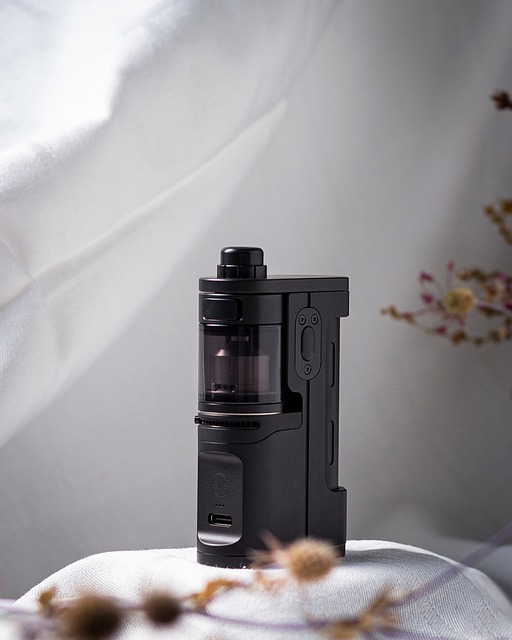Seamless integration design in modern product development, particularly in automotive, aims to create harmonious connections between components for optimal performance and safety. In the context of vehicle modifications, this approach ensures that upgrades like suspension lifts and tailored wheel packages work together efficiently while adhering to regulations. By focusing on user needs and leveraging technology, designers can enhance driving experiences without compromising balance or efficiency. Select Performance Mods, when carefully chosen based on driving style and needs, contribute to smoother interactions, faster response times, and increased productivity. Strategic modifications, such as performance brakes, TPMS, and custom power upgrades, ensure a well-rounded integration process that maintains vehicle aesthetics and functionality. Real-world examples demonstrate the benefits of seamless integration design in off-road vehicles and manual transmissions, showcasing its significant impact on both performance and driver satisfaction.
Seamless integration design is transforming user experiences, fostering engagement, and propelling businesses ahead. This article delves into the concept, exploring its defining principles and numerous benefits. We dissect key components for crafting effortless user journeys, offer strategies to intelligently select performance mods for integration, and address common challenges with actionable solutions. Through real-world case studies, discover how successful seamless integration design is revolutionizing industries, setting new standards for user satisfaction.
- Understanding Seamless Integration Design: Defining the Concept
- Benefits of Implementing Seamless Integration in User Experience
- Key Components for Achieving Effortless User Journeys
- Strategies to Select and Prioritize Performance Mods for Integration
- Common Challenges in Seamless Integration Design and How to Overcome Them
- Case Studies: Real-World Examples of Successful Seamless Integration
Understanding Seamless Integration Design: Defining the Concept

Seamless integration design is a concept that focuses on creating harmonious connections between various components within a system or product, ensuring they work together effortlessly. It involves understanding user needs and leveraging technological advancements to deliver a unified experience. By eliminating jagged edges and discontinuities, seamless integration enhances both functionality and aesthetics. This approach is particularly significant in the automotive industry, where modern vehicles are packed with advanced features and systems that need to work in perfect sync for optimal performance and safety.
When applied to vehicle customization, such as off-roading or track days, seamless integration design guides modifications like selecting the right suspension lifts for off-roading or wheel and tire packages tailored for specific terrains. It also extends to ensuring modified vehicles comply with international regulations, including insuring them appropriately for peace of mind. This holistic approach ensures that every upgrade or modification complements the vehicle’s core functions, creating a balanced and efficient driving experience.
Benefits of Implementing Seamless Integration in User Experience

Implementing seamless integration design in user experiences offers a multitude of benefits that significantly enhance overall performance and satisfaction. When various system components work harmoniously together, users enjoy smoother interactions, faster response times, and more intuitive navigation. This translates into increased productivity and efficiency, as tasks can be completed with minimal effort and fewer errors.
Moreover, seamless integration insures modified vehicles internationally, ensuring a consistent experience regardless of the user’s location or device. Features such as suspension lifts for off-roading and steering wheel extensions for comfort become more accessible when integrated seamlessly, providing users with enhanced control and customization options. This not only caters to diverse user needs but also fosters a deeper level of engagement and loyalty.
Key Components for Achieving Effortless User Journeys

Strategies to Select and Prioritize Performance Mods for Integration

When designing a seamless integration, selecting and prioritizing performance mods is an art. It involves understanding the vehicle’s existing capabilities and identifying areas for enhancement while ensuring optimal functionality and safety. One strategic approach is to start with essential upgrades that directly impact driving dynamics, such as performance brakes tailored for street driving, which can significantly improve control and stop times. This foundational step sets the stage for further enhancements.
Additionally, evaluating the vehicle’s specific needs based on intended use is crucial. For instance, tire pressure monitoring system (TPMS) upgrades can be a smart choice for vehicles often traversing diverse terrains, ensuring optimal tire performance. Similarly, custom vehicle power upgrades can be considered for those seeking enhanced acceleration and overall driving experience. Prioritizing these mods in line with the driver’s preferences and practical requirements ensures a well-rounded and seamless integration process.
Common Challenges in Seamless Integration Design and How to Overcome Them

Seamless integration design aims to create a harmonious blend of components within a vehicle, but it’s not without its challenges. One common hurdle is ensuring compatibility between various systems and parts, especially with modifications like tailored exhaust notes for specific models or the choice between carbon fiber hoods vs. fiberglass. These customizations can disrupt the original flow, requiring designers to carefully adapt and adjust without compromising aesthetics or performance.
Overcoming these challenges involves a strategic approach, such as selecting performance mods that complement each other. For instance, optimizing fuel injection cleaning for improved performance can enhance overall engine efficiency while ensuring seamless integration. Through meticulous planning and the right modifications, designers can achieve a balanced result, showcasing both enhanced functionality and visual appeal.
Case Studies: Real-World Examples of Successful Seamless Integration

In the realm of automotive design, seamless integration has become a game-changer, transforming user experiences and performance. Case studies from real-world applications highlight successful implementations of this concept. For instance, off-road vehicles have benefited immensely from carefully crafted integration strategies, enhancing their acceleration capabilities with powerful boosts achieved through modifications like supercharger vs turbo setups. These systems seamlessly blend advanced engineering with intuitive design, ensuring drivers can navigate rugged terrains with ease.
Furthermore, custom gearshifts for manual transmissions showcase another facet of seamless integration. By fine-tuning the gear ratios, vehicles can offer smoother and more responsive shifting, improving overall performance. Such customizations not only cater to enthusiasts seeking optimal control but also contribute to improved fuel efficiency and reduced driver fatigue during long journeys. These real-world examples underscore the significant advantages that come from selecting the right performance mods for seamless integration design.
Seamless integration design is not just a trend but an indispensable approach to enhancing user experiences. By understanding and implementing its key components, such as defining clear user journeys, prioritizing performance mods through strategic selection, and overcoming common challenges, businesses can foster efficient and enjoyable interactions. As evidenced by successful case studies, seamless integration transforms digital landscapes, ensuring users navigate with ease and confidence. When done right, it becomes a powerful tool to differentiate brands and drive user engagement in today’s competitive market. Embracing this design philosophy is crucial for creating vibrant, user-centric digital experiences that leave lasting impressions.
